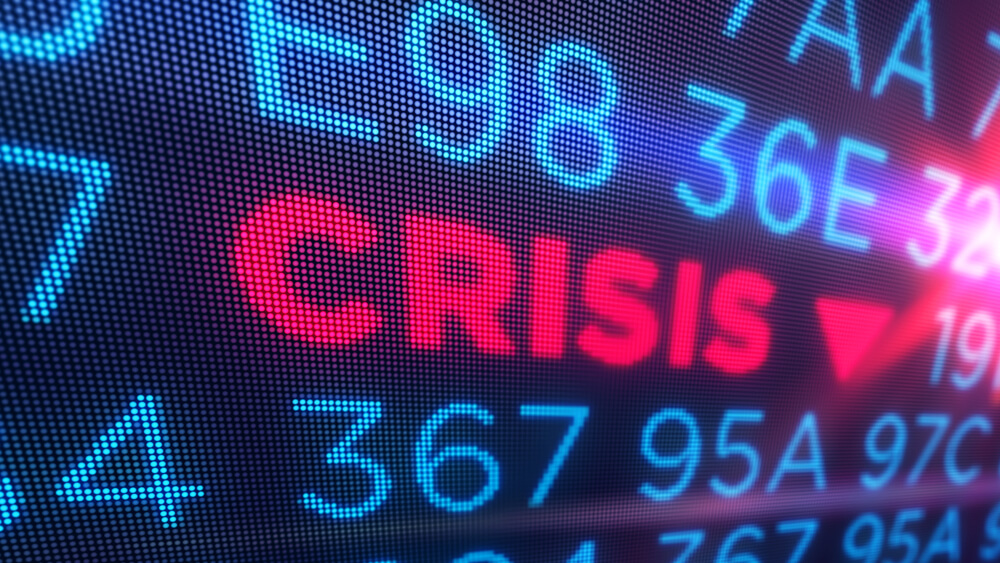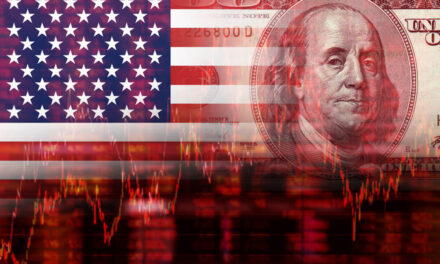The evidence of a recession coming this year continues to pile up. Most recently, the retail sector flashed warning signs.
Foot Locker (NYSE: FL) crashed last week after lowering its outlook for this year.
Earlier in the week, Home Depot (NYSE: HD) lowered its guidance.
Target (NYSE: TGT) warned of a possible cut to its outlook after seeing consumers shift away from discretionary spending.
It’s been a tough season for retailers who are now in one of the worst-performing segments of the market. They’re expecting lower sales, which may indicate a contracting economy is on the way.
But the more important and less understood takeaway is how this affects the banking sector.
Retail’s decline is putting banks in danger, lighting the fuse for another blowup in this year’s most fragile sector.
The Cascading Risks of Low Sales for the Banking Sector
An obvious reason for banks to worry is their exposure to commercial real estate. As I pointed out Thursday, small regional banks hold about 70% of the outstanding commercial real estate loans.
When sales drop — as Footlocker, Home Depot and Target anticipate — retailers may close low-performing stores. This causes a chain of compounding problems that ultimately fall back onto the banks.
- Fewer stores means lower rents at the strip malls and other developments that retailers leave behind.
- Falling rent payments make debt service more difficult, making corporate real estate owners more likely to default or walk away.
- That’s a problem for the small regional banks that own most commercial property.
Another concern for the banking sector is that lower consumer spending means lower income for banks.
Every time a consumer swipes a card, somewhere a bank gets paid. Fees for card usage are tied to consumer spending.
Banks make about 1% in profit on their credit card portfolios, according to a Federal Reserve study. It’s a significant amount of income when spending is measured in trillions of dollars.
So a drop in consumer spending could cost banks billions of dollars. That comes at the same time that loan portfolio weaknesses threaten to make problems worse for banks.
Another problem for banks is that retailers are their customers. Retailers, like all businesses, use banking services. Checking accounts allow retailers to fund daily operations. But retailers often need access to short-term loans. This is yet another area where banks are at significant risk.
When Big Companies Tap Into Lines of Credit
Banks often provide reserve lines of credit to large companies. Foot Locker, for example, has a $500 million line of credit with Wells Fargo and other banks.
Even the most successful public companies have these facilities in place. Walmart, for example, has $15 billion in untapped credit available from JPMorgan and others.
Companies don’t generally use these credit lines in good times. They are like an insurance policy when crisis strikes. The premium on the policy is generally low.
Foot Locker pays about 0.25% a year. That’s $1.25 million, or 0.000014% of sales. Walmart pays just 0.04% or less for its loan commitments.
While companies don’t generally tap these lines of credit, when they do, there’s a very good reason. It usually means they are running out of money and need cash immediately.
There are some restrictions on when companies can access these credit lines. But managers at large companies might act before those restrictions are triggered. That means the bank will be making loans at the worst possible time to its customers.
With retailers announcing problems, banks are certainly looking at their outstanding lines of credit. Their goal will be to limit risk.
But reviews take time, and the risks to banks are growing as the economy continues to weaken.
All told, the banking sector faces a sheer tidal wave of risks that have sprung up in the first half of the year. It’s happened so fast, many won’t be able to find their footing in the coming recession.
Adam and his team have been hard at work identifying these threatened banks. His latest research indicates 282 publicly traded banks are considered “High-Risk” right now.
He’s gearing up to release this research with his readers, showing exactly which banks to remove from your portfolio. In addition, he’s sharing an “off Wall Street” method of profiting as these banks collapse.
Adam believes the collapse of Silicon Valley Bank, Signature, and First Republic were just the beginning. To make sure you’re protected from what’s to come and put yourself in position to actually grow your wealth, go here and learn how you can access Adam’s newest research.
Meanwhile, here in Stock Power Daily, we’ll keep you posted on exactly how to stay ahead of the slowdown with timely opportunities that will give you the chance to protect and build your wealth.
Until next time,

Mike Carr
Senior Technical Analyst





